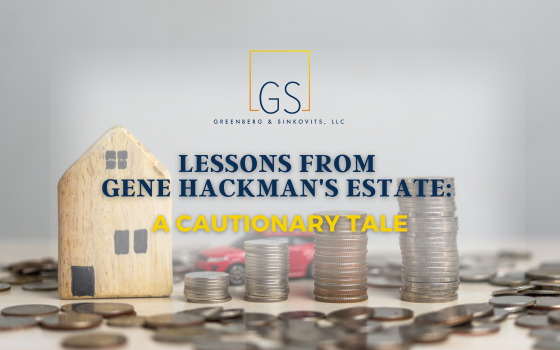The recent passing of legendary Oscar-winning actor Gene Hackman and his wife, Betsy Arakawa, has drawn significant attention to the importance of careful estate planning. Their story serves as a poignant reminder of how mistakes in drafting these documents can have unintended consequences. By the time of his passing, Hackman had amassed a significant estate, estimated at $80 million.
Gene Hackman has 3 children from a previous marriage and Arakawa has no children. Each had wills in place.
In February 2025, the parties were discovered by officers in their New Mexico home after being called for a welfare check and found both Hackman and Arakawa dead, along with one of their dogs. Investigators reported that Arakawa died from a rare disease and Hackman, who suffered from Alzheimer’s disease, died of causes related to cardiovascular heart disease a week after his wife died.
Arakawa was named as the sole beneficiary of his estate and trustee of the Gene Hackman Living Trust. Hackman’s three children were not named as beneficiaries in the will.
Why does this matter?
Hackman’s will did not account for the possibility of his wife predeceasing him. When drafting estate plans and naming beneficiaries and guardians of your children, it is crucial to plan for contingencies. This oversight means his estate is now in probate court, which means public proceedings for how his estate will be administered. Considering that Hackman led a private personal life, the public nature of the probate matter would have been a very unintended consequence.
It is common to include a simultaneous death clause that mirrors the state statute or can extend the timeframe of the clause. In Illinois, that statute is 755 ILCS 5/3-1. The statute provides instructions for distribution of property where it is unclear who died first among multiple people and depends on who survived whom. If there’s no clear evidence of who died first and no specific instructions in legal documents, the statute provides rules for distributing property:
- Individual Property: Each person’s property is handled as if they survived the others.
- Successive Beneficiaries: If multiple beneficiaries are supposed to inherit property one after another, the property is divided equally among them, as if each one survived.
- Joint Tenants: If two people jointly own property, it’s split in half, with each half treated as if one person survived. If more than two joint tenants die, the property is divided proportionally among them.
- Insurance Policies: If both the insured person and the beneficiary of a life or accident insurance policy die, the policy proceeds are distributed as if the insured person survived the beneficiary.
Key Lessons from Hackman’s Estate
- Plan for the Unexpected: Life is unpredictable. Hackman (95) likely assumed he would pass before his younger wife (65), but the reverse happened. Estate plans should account for all possible scenarios.
- Include Contingency Plans: Hackman’s will did not mention his children, which could lead to legal complications. It’s essential to include contingency plans to cover all potential outcomes. If you mean to disinherit your children, you need to specify that in your will.
- Don’t Assume Order Matters: Just because someone is older doesn’t mean they will pass first. Estate planning should be thorough and flexible.
Conclusion
Gene Hackman’s estate serves as a cautionary tale for all of us. Proper estate planning is not just about distributing assets; it’s about ensuring that your loved ones are protected and your legacy is secure, no matter what happens. By learning from Hackman’s experience, we can better prepare for the future and avoid similar pitfalls. Read more about the intricacies of this case here.
If you want to make sure your estate isn’t a legal mess, consider putting a comprehensive plan in place today.






